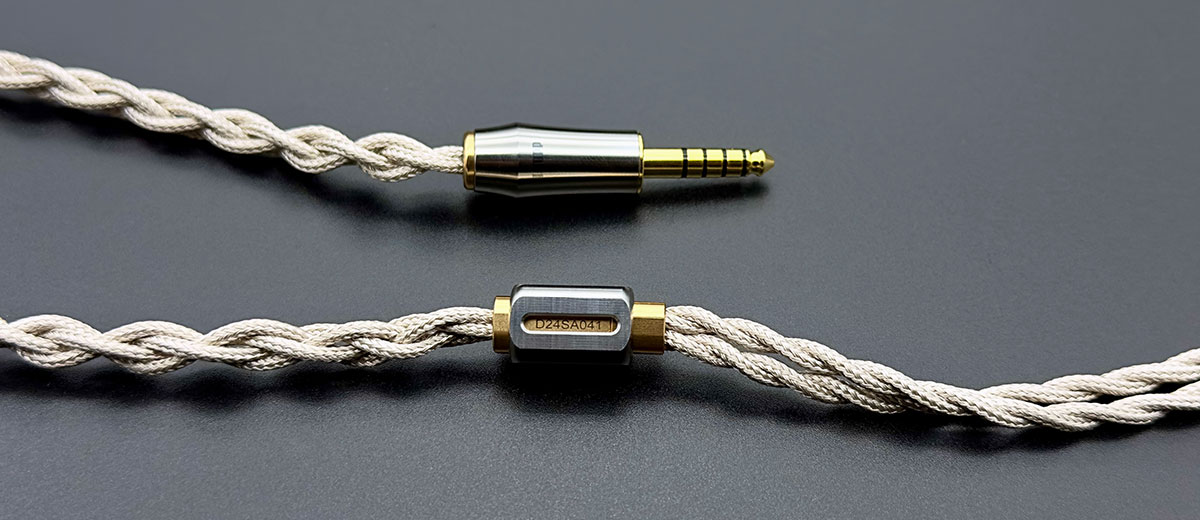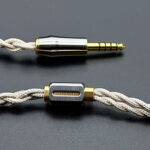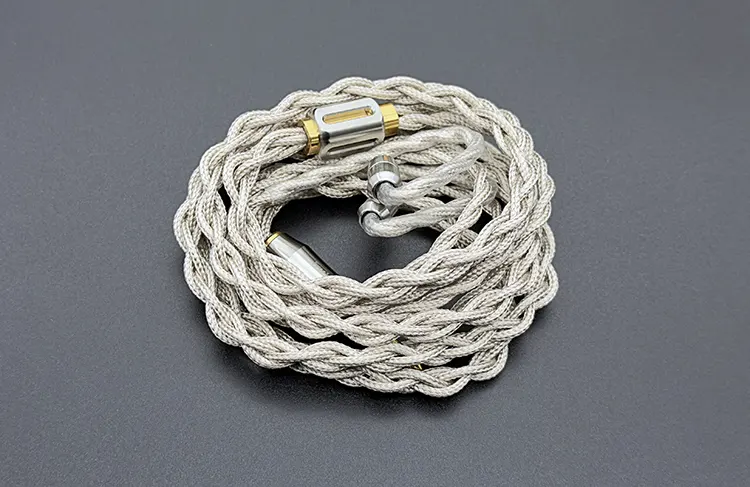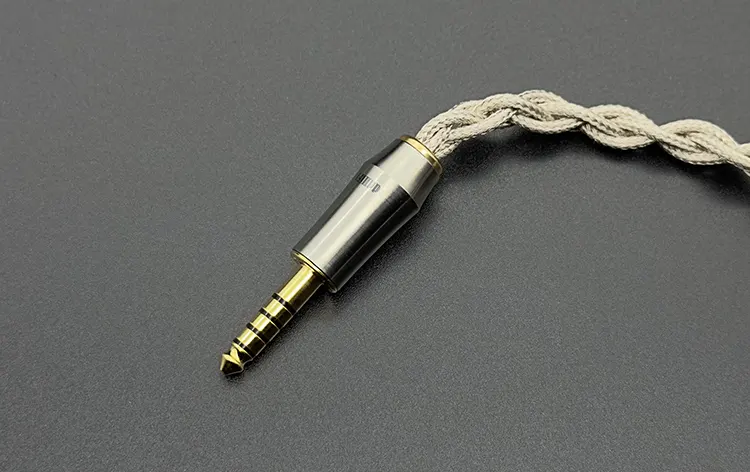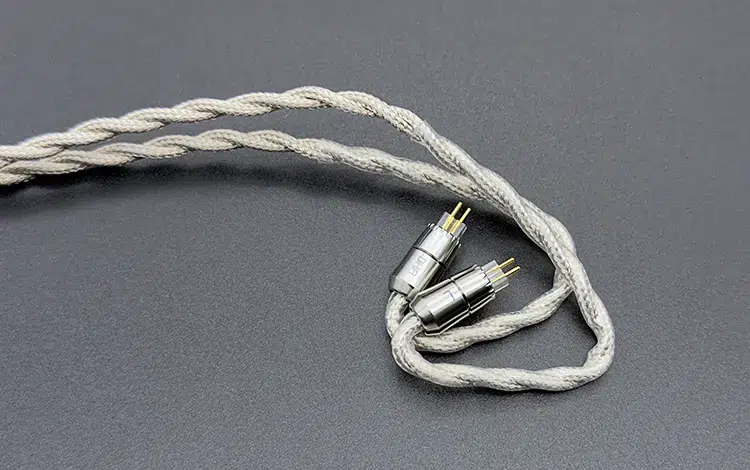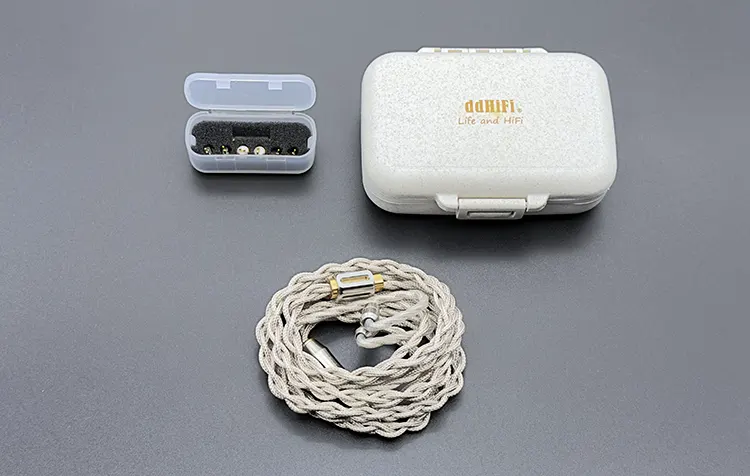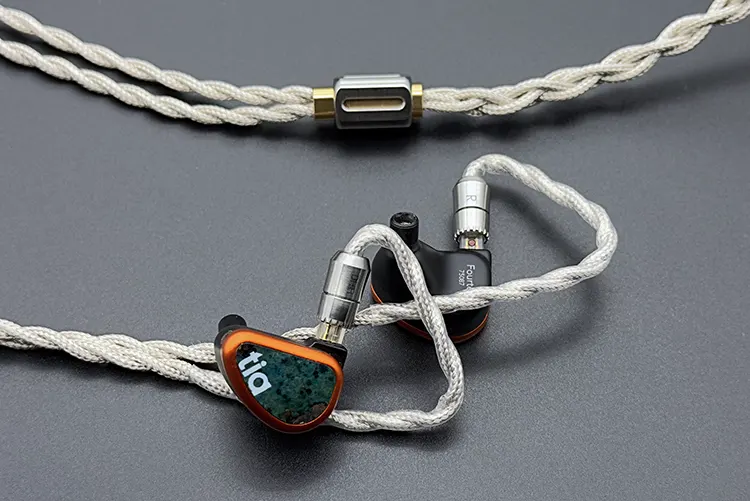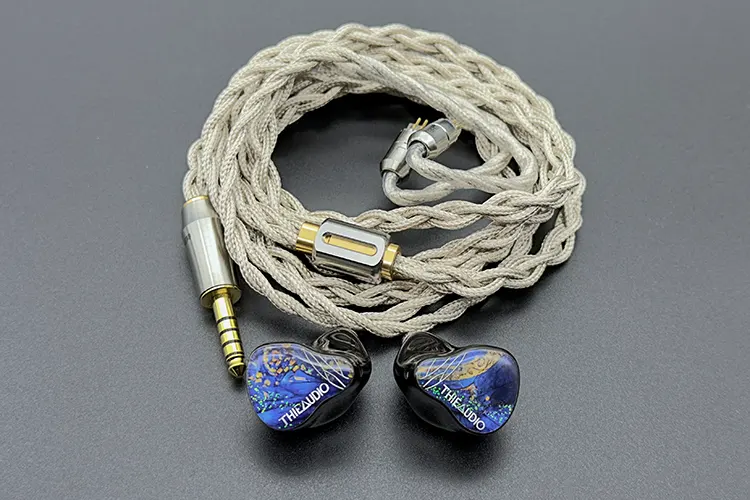In this feature, Nihal reviews the ddHiFi Nyx Net, a Type 2 Litz 24AWG high purity OCC copper aftermarket cable for in-ear monitor users. It is priced at $399.99.
Disclaimer: This sample was sent to me in exchange for my honest opinion. Headfonics is an independent website with no affiliate links. I thank ddHiFi for their support.
You can read about previous ddHiFi products we have previously reviewed on Headfonics here.
This article follows our latest scoring guidelines, which you can read here.
ddHiFi has built quite a reputation with its premium offering in the cables and adapters space. They are becoming synonymous with a durable and long-lasting build quality. I have owned a couple of the interconnects from them, and they perform really well.
This is the first time I am trying their IEM cables, and from the initial looks and feel, they felt very promising.
Before the $399.99 BC130 Net (Nyx Net), they had released Nyx Pro, which is the most premium cable offered by the brand at $499.99. Nyx Net sits just below the Nyx Pro and takes some inspiration from the elder brother.
In this review, I will do a detailed analysis of the Nyx Net, see how it pairs with some IEMs, and compare it with the Nyx Pro and a couple of Effect Audio offerings such as the Code 24C and the Eros S II.
Material & Geometry
Nyx Net is a high-purity single crystal copper cable with a wire gauge of 25.4 AWG. The core structure of Nyx Net is similar to that of Nyx Pro. It features a 1:8 ratio, with seven larger-diameter single-crystal copper conductors arranged in a circular array.
There is an even distribution of extremely fine single-crystal copper conductors around the perimeter. These wires differ in diameter: the inner core consists of 0.08 mm wires, while the outer ones measure 0.05 mm in diameter.
Nyx Net incorporates two insulation layers along with a shielding layer. The first inner layer is made of High-Density Polyethylene (HDPE) foam, and the second layer consists of a high-transparency SoftFlex PVC material.
Each conductor is independently insulated, ensuring proper signal transmission across various frequency bands. This shielding structure of Nyx Net enhances signal transmission speed through single-crystal copper materials.
Design
The Nyx Net features a sophisticated, minimalist design while maintaining the aesthetic appeal of the Nyx Pro.
This time, the color is lighter in shade, offering a soft and delicate look while remaining sturdy in construction. Every hardware component, from the splitter to the 2-pin connectors and adapter plug, exudes top-notch quality.
The cable is configured in a 4-wire setup. The outer sleeve is made of fiber mesh, and the braiding is nicely done without any visible gaps.
While I have always preferred clear PVC coatings that reveal the wires underneath, the fiber mesh on this cable has a unique and appealing texture.
There are two types of 4.4mm termination plugs. The standard version features a titanium alloy, gold-plated 4.4mm plug. This adapter is cylindrical, tapering slightly toward the end where the cable emerges. The connector is lightweight.
The other option features a Pentaconn plug made from oxygen-free copper with gold plating, which is said to enhance the tuning by adding a richer mid-bass presence.
The version I am reviewing here is the standard one. The Pentaconn plug version is priced $50 more than the standard one.
The 2-pin connectors are well-built and slightly larger compared to those on cables like Effect Audio’s Eros S II, for reference. They include markings for R (right) and L (left), along with small colored dots on the pins for easy identification.
The Nyx Net includes an interchangeable pin system with a wide variety of 0.78mm pins, ensuring compatibility with various IEMs. A pair of MMCX pins is also included.
For the development of this pin system, ddHiFi collaborated with Eletech. While changing the pins might be slightly challenging due to their small size, the versatility they offer is a clear advantage.
Handling
The Nyx Net cable is soft, lightweight, and very easy to handle. The fiber mesh braiding gives it an elegant look while ensuring the build remains robust.
The cable has a slight firmness, which helps maintain its character during use. The stiffness is almost negligible, making it easy to roll up and store. When rolled up, it retains its shape and does not detangle itself.
The ear hook has a slightly firm shape that holds well when worn, though it could be a bit more supple. Despite the slight firmness, the fit is comfortable and does not press on the ears.
Being lightweight, the cable does not add any extra tension or unwanted pressure on the ears. There is very slight cable noise or microphonics, but it does not interfere with the listening experience.
Packaging & Accessories
The Nyx Net arrives in a sturdy cardboard box of an average size. Upon opening the white box, you are greeted by the carry case and a set of interchangeable pins, neatly tucked inside a foam cutout.
Coming from the Nyx Pro, it might feel a bit underwhelming, as the Nyx Pro includes a richer set of accessories, which seems lacking with the Nyx Net.
For a cable, I don’t expect too many accessories, but the absence of modular termination feels like a missed opportunity to enhance usability.
The carry case is a larger version of the plastic case that comes with the Nyx Pro. It complements the cable’s color scheme and offers decent space to store the cable.
However, when paired with IEMs, the space feels insufficient at times, and a larger case would have been more practical.
Performance Impressions
The following sound impressions of the Nyx Net Cable were completed using 64 Audio Fourte and THIEAUDIO Oracle MKIII alongside my main source, Lotoo’s Paw Gold Touch.
Summary
The Nyx Net cable focuses on delivering the true characteristics of IEMs with some additional sparkle and energy in the upper frequency region.
The cable inherits some of the strengths of its elder sibling, Nyx Net, particularly in its bass response and soundstage presentation. The most noticeable impact of the cable lies in the treble region, while it aims to keep the rest of the frequency ranges largely intact.
Timbre
The bass region with the Nyx Net sees a notable level of improvement. Compared to stock cables, there is an immediate enhancement in impact and punch in the sub-bass and mid-bass regions.
The bass feels bolder, with a touch of added warmth. It is well-textured and highly detailed. While the mid-bass impact increases slightly, there is a slight trade-off in tightness. Overall, the bass definition is richer and more enjoyable.
The midrange gains a touch of extra warmth, complemented by decent clarity and resolution. However, the midrange does not exhibit any additional forwardness. It maintains a neutral presentation with good extension in the upper midrange region.
The upper midrange features some added energy, which can come across as a bit sharp with certain IEMs.
The extra crunchiness in the lower treble region adds excitement and carries through to the upper treble region, which feels airy and detailed. Subtle nuances in the treble region are presented beautifully.
Staging & Imaging
With the Nyx Net cable, there is a positive effect on staging. While the width remains nearly the same, the depth improves significantly. You will notice a marked enhancement in the layering of instruments, with better separation.
This contributes to an immersive, holographic audio experience. Instruments gain more breathing room, and microdetails emerge with ease.
Thanks to the refined treble region, there is an improved sense of clarity and openness. The imaging performance is also commendable, offering a more precise spatial representation of instruments.
Synergy
64 Audio Fourte
The 64 Audio Fourte sound profile delivers impactful sub-bass, natural mids with warmth and clarity, and treble that is energetic and sparkling.
The soundstage is well-rounded, offering a three-dimensional sense with good width and depth. The Fourte lies on the brighter side of the spectrum and responds nicely to cable changes.
When you pair the Fourte with the Nyx Net, you will notice two things: first, how true to the IEM it reproduces the highs, and second, how well it preserves the tuning without introducing significant changes.
In the lower frequency range, it preserves the impact and punch that the Fourte handles exceptionally well. The texture and layering aspects remain largely unaffected, and the bass brings out plenty of details.
Both the sub-bass and mid-bass remain nearly intact without compromising their impact. The lower midrange has a nice, dense body.
In the midrange region, I find it lacking some refinement, though it performs better than the stock cable. The midrange remains very detailed and delivers excellent resolution. It stays natural with some added warmth, which I do not think the Fourte necessarily needs.
The upper midrange to the treble region is where I find the cable truly shining. It adds a lot of energy to this region, but nothing harsh or unpleasant.
Since the Fourte already handles treble quite well, the Nyx Net adds a lot of sparkle and crunchiness, pushing the treble to its limits. If it were slightly more energetic, it might become overly sharp.
The Nyx Net preserves the Fourte’s soundstage without noticeable alteration. While I feel it slightly limits the width of the stage, it’s not very significant. The depth of the stage remains intact.
THIEAUDIO Oracle MKIII
The THIEAUDIO Oracle MKIII IEM uses two dynamic drivers, two Knowles balanced armature drivers, and two Sonion EST tweeters. It has a near-neutral sound signature with a slight touch of warmth.
The dual dynamic drivers provide bass emphasis while the midrange remains clean, and the upper frequencies deliver detail and extension. The Oracle MKIII’s neutral tuning is responsive to cable changes, making it ideal for pairing with aftermarket cables.
As with the Fourte, Nyx Net brings out the true character of the Oracle MKIII. While the lower frequencies and midrange remain mostly intact, the treble region is imparted with some added energy.
In the bass region, the Oracle MKIII has a nice impact with sufficient sub-bass depth and great control in its midbass. While the level of impact is not disturbed, I do feel the texture could be a bit better, along with the tightness. The bass overall feels a bit loose.
In the midrange, the neutral characteristics of the Oracle MKIII are nicely retained with some added warmth, which I find missing in the stock cable.
In the upper midrange and beyond, the cable imparts energy that feels somewhat unwanted as the Oracle MKIII already possesses a sharp treble region. This addition in energy feels exaggerated and occasionally sharper than usual, depending on one’s tolerance level.
The soundstage with Nyx Net does not see much change. The width is marginally impacted, which is hardly noticeable. The depth in stage presentation is enhanced, and the instruments seem to have more breathing space.
Overall, except for the added energy in the higher frequencies, I like the synergy of this cable.

